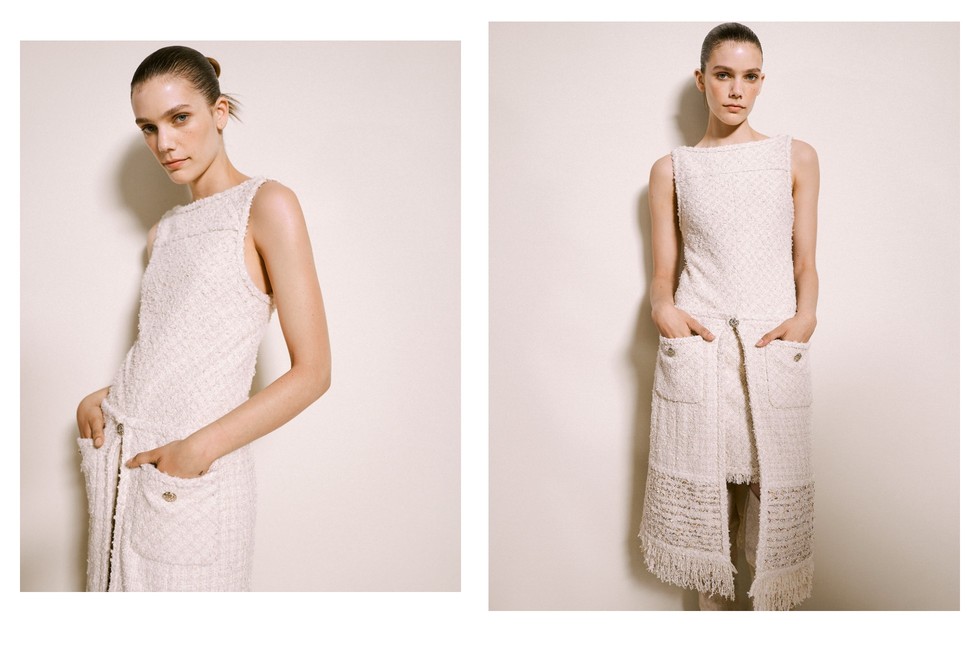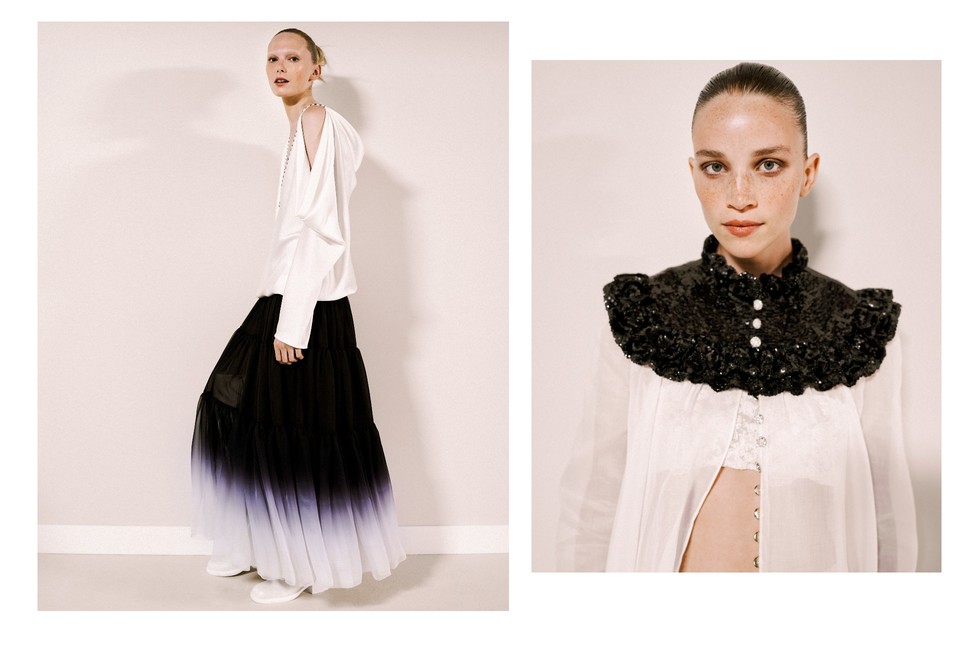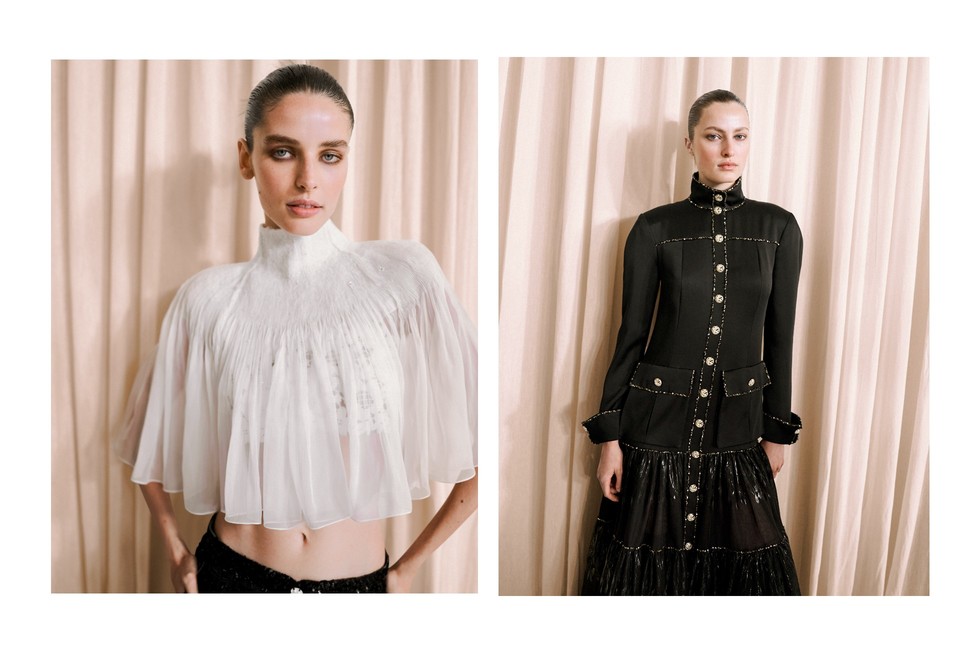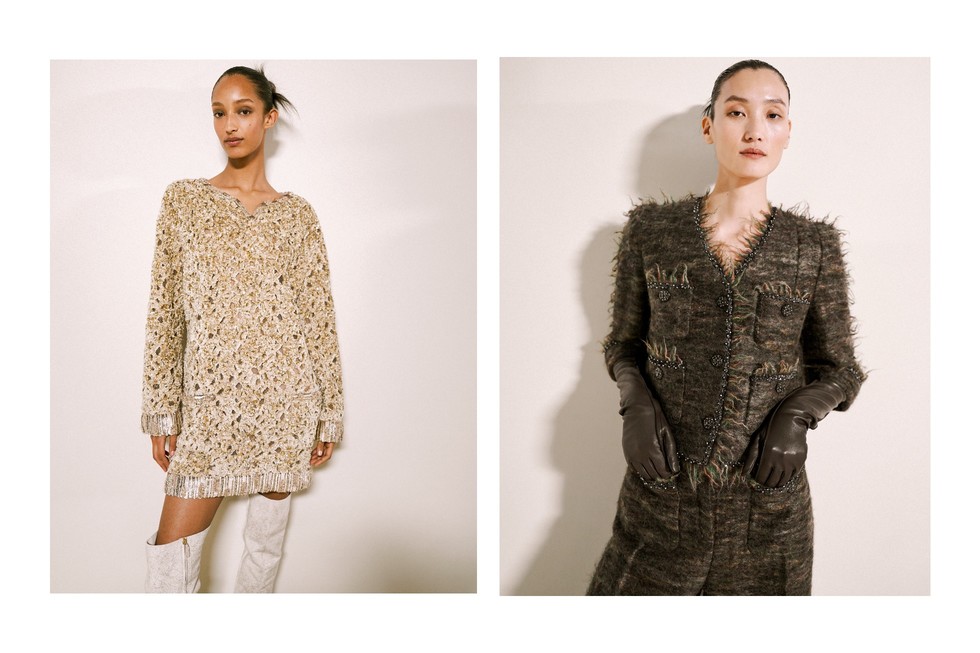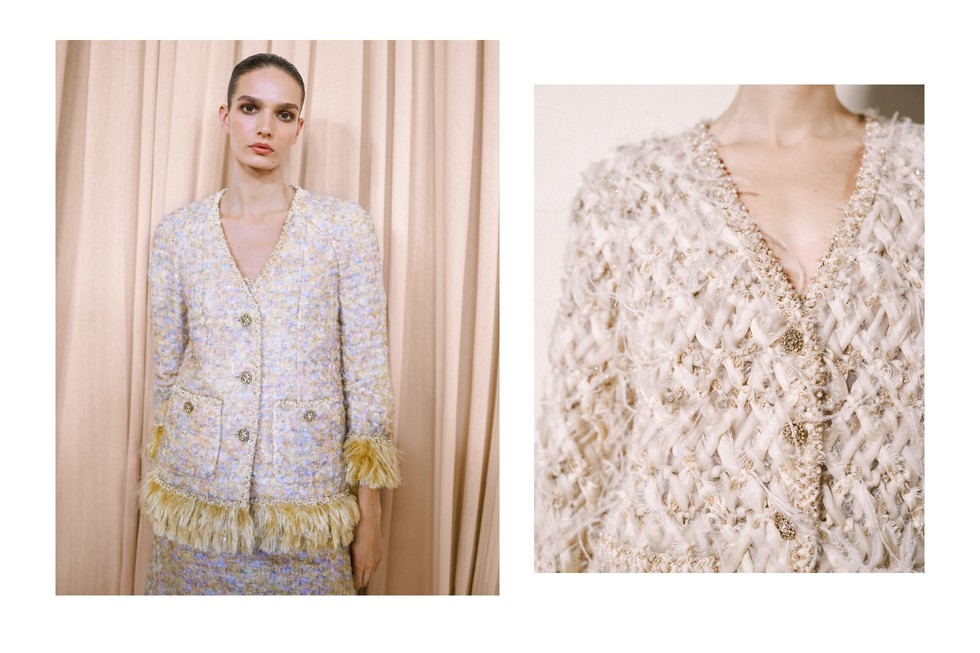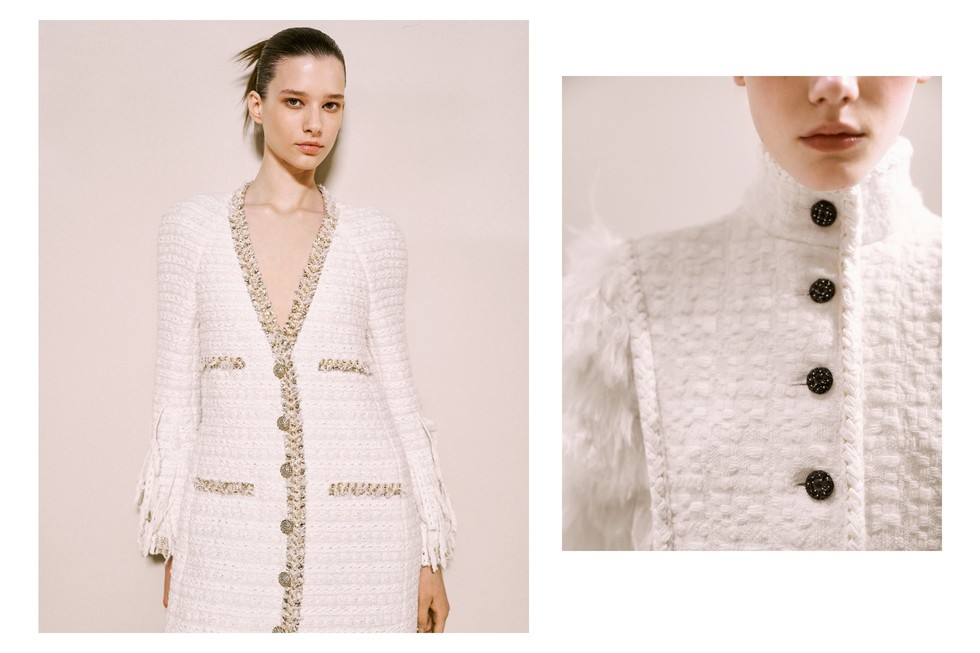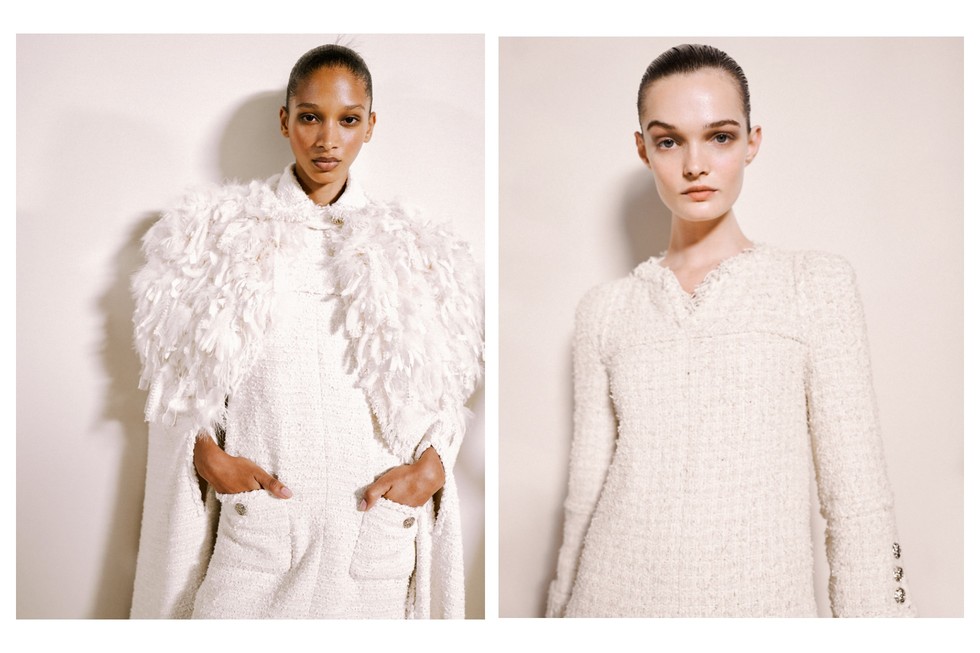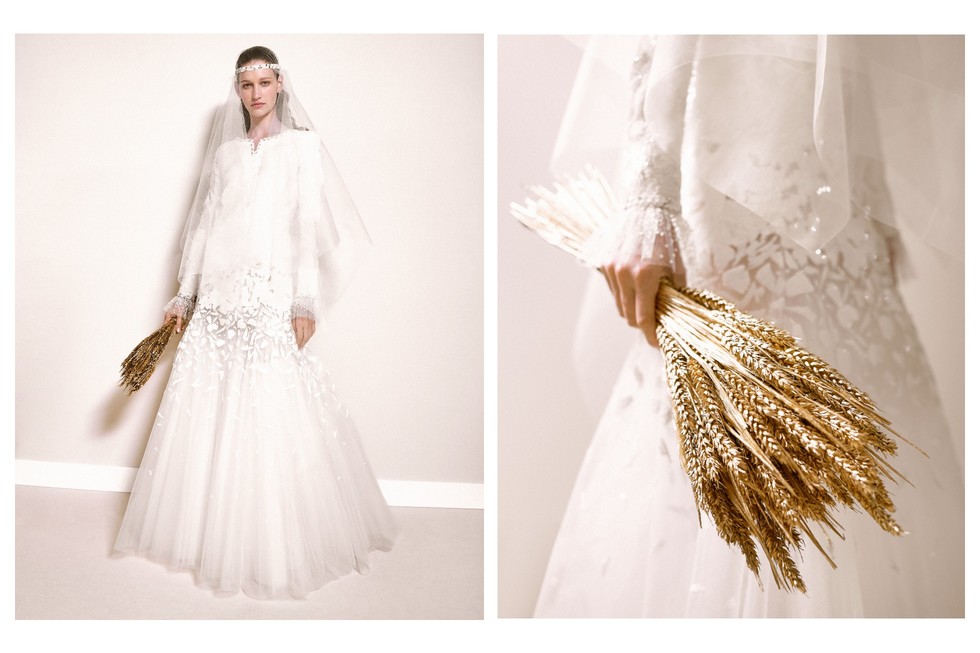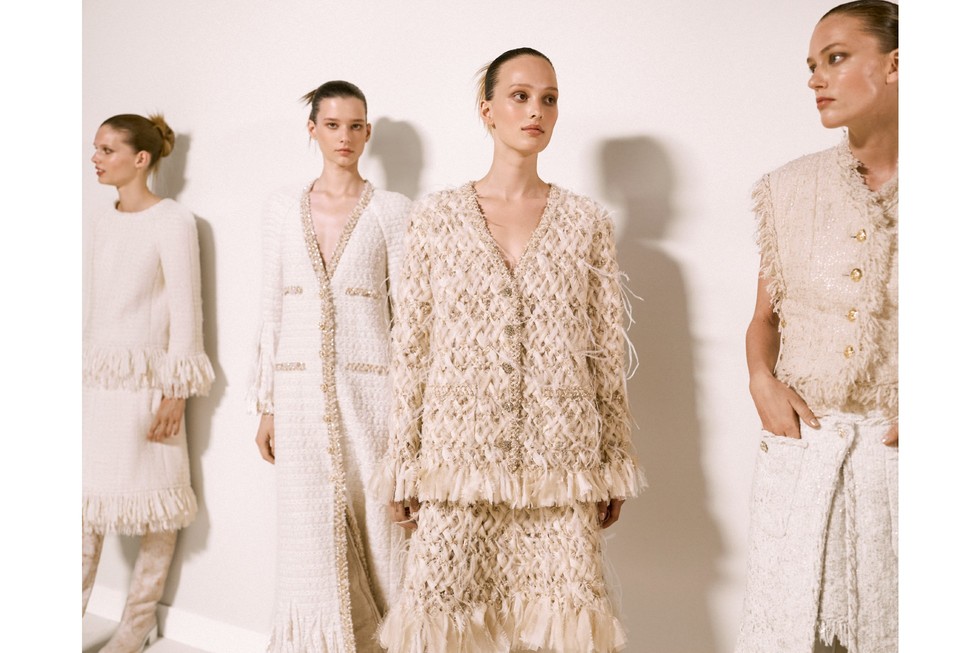It’s not often that a fashion show feels like an exhale. But this season, Chanel invited us to breathe. Into the hallowed Salon d’Honneur at the Grand Palais, artist and designer Willo Perron crafted a serene tableau, conjuring the soul of the countryside, not as a place of nostalgia, but as a palette of possibility.
The Fall-Winter 2025/26 Haute Couture collection felt like a return, not just to nature, but to Gabrielle Chanel herself. Her legacy, so often reduced to black, pearls, and perfume, was richer, wilder, and more grounded than we remember. This season, the house reconnected with her love for English landscapes and the rugged romance of the Scottish moors. It showed in the clothes: ecru, plum, deep forest green; cuts drawn from menswear with the grace of tailoring made for movement and not restriction.
There was tweed, of course, but not as we’ve seen it before. Some looked almost hand-knit, shaped into soft coatdresses and mohair suits in hues that echoed fallen leaves. Others, in bouclé and brushed finishes, suggested sheepskin or faux fur, often playfully paired with feathers for texture and drama. A long gilet, a jacket that looked like a jumper, short trousers delicately painted and embroidered, these were garments meant for walking, for striding, for living.
But the collection wasn’t just about quietude. It was, at times, celestial. Wheat, a symbol Mademoiselle adored for its ties to abundance, appeared as golden embroidery, buttons, and feather-like flourishes. The finale offered light: a golden lamé flounced dress like the last rays of sunlight over a field. The wedding dress, too, bore the wheat motif tenderly embroidered along the neckline, as if nature itself offered a benediction.
Perhaps most striking was how little spectacle the collection needed. There was no overstatement. Everything, even the embellishments, felt intentionally poetic rather than decorative. The floral embroidery on a pea coat or satin crêpe pinafore dress spoke not of fantasy, but of earth and craft.
This was Chanel speaking softly. And yet, it resonated deeply.
In a time when fashion often shouts for relevance, Chanel reminded us that silence, too, is powerful. That elegance lies in ease. And that nature like couture is not a trend, but a timeless refuge.
image courtesy of CHANEL






